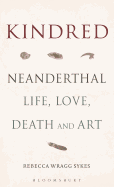
Big discoveries about Neanderthals make the news in mainstream media and major science journals alike. In Kindred: Neanderthal Life, Love, Death, and Art, archeologist Rebecca Wragg Sykes demonstrates that more is happening in the world of Neanderthal studies than what she terms "Neander-news."
Sykes shares her considerable knowledge about current Neanderthal studies in a style that is clear enough for the lay reader but never simplistic. She looks closely at long-held beliefs about Neanderthals and how they evolved, beginning with the assumption that they lived primarily during the Ice Age. She shows that archeologists are overturning many of those beliefs as a result of new discoveries and the application of advanced scientific technologies to sites that were first excavated decades earlier. Considering the ways in which Neanderthals are different from Homo sapiens physically, Sykes offers speculations for why. She introduces readers to the details of Neanderthals' tools, diet and shelters, pulling back the curtain to demonstrate how scientists know what they know. And she makes some fascinating, and controversial, leaps from what is already known about the physical world of the Neanderthals to what that knowledge might indicate about how they thought about that world.
At each step of the way, Sykes compares new knowledge about Neanderthals with knowledge about ancient Homo sapiens. She makes a persuasive case that Neanderthals were not a dead end on the path to us, but instead "enormously adaptable and even successful ancient relatives." In short, they were kindred. --Pamela Toler, blogging at History in the Margins

